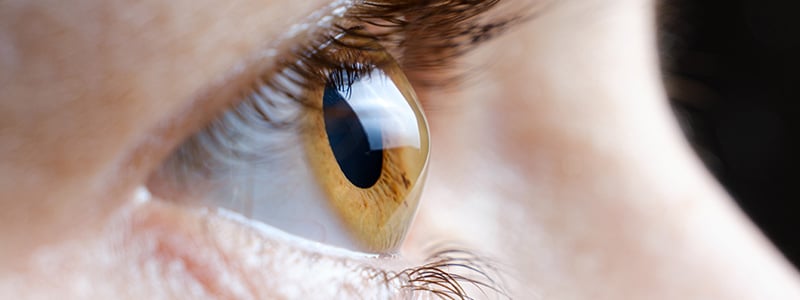Diagnosing the Cornea
The cornea is a critical part of the eye, responsible for focusing light onto the retina and enabling clear vision. However, like any other part of the body, the cornea is susceptible to various conditions and diseases that can impact vision and overall eye health. In this comprehensive guide, we will explore the process of diagnosing cornea conditions, shedding light on the importance of early detection and accurate assessment for effective treatment.
Understanding the Cornea
Before delving into the diagnostic process, it is essential to understand the structure and function of the cornea. The cornea is the transparent, dome-shaped outermost layer of the eye, covering the iris, pupil, and anterior chamber. It acts as a protective barrier against foreign particles and plays a significant role in focusing light onto the retina, allowing us to see clearly.
Several corneal layers work together to maintain its transparency and refractive properties. These layers include the epithelium, Bowman’s layer, stroma, Descemet’s membrane, and the endothelium. Any disruption or damage to these layers can lead to corneal conditions and affect vision.
Common Cornea Conditions
There are various cornea conditions that individuals may encounter throughout their lives. Some of the most common corneal issues include:
- Corneal Abrasions: A corneal abrasion refers to a scratch or injury on the corneal surface, often caused by foreign objects, such as dust, sand, or contact lenses. It can lead to discomfort, redness, tearing, and sensitivity to light. While most corneal abrasions heal on their own, larger or deeper injuries may require medical intervention.
- Corneal Ulcers: Corneal ulcers are open sores on the cornea, typically caused by infections, often bacterial or viral. These ulcers can be quite painful and may lead to vision loss if not treated promptly and adequately.
- Keratoconus: Keratoconus is a progressive condition that causes the cornea to become thin and bulge into a cone-like shape, distorting vision. It usually starts during the teenage years and can worsen over time. Early diagnosis is crucial to manage and prevent severe vision impairment.
- Corneal Dystrophies: Corneal dystrophies are a group of genetic disorders that cause abnormal deposits or changes in the cornea, leading to vision problems. Each type of corneal dystrophy affects different corneal layers and may have varying degrees of severity.
- Corneal Scarring: Corneal scarring can occur as a result of injury, infection, or previous surgeries. Scarring can cause blurred or distorted vision, depending on its location and extent.
Diagnosing Cornea Conditions
Accurate and timely diagnosis is crucial for determining the specific cornea condition and developing an appropriate treatment plan. When you visit an eye care professional with symptoms or concerns related to your cornea, they will conduct a comprehensive eye examination, which may include the following steps:
- Patient History: The eye care professional will begin by taking a detailed medical history, including any past eye injuries, surgeries, or pre-existing medical conditions. This information helps in understanding potential risk factors and the context of the current symptoms.
- Visual Acuity Test: A visual acuity test involves reading letters from an eye chart to assess the sharpness and clarity of your vision. This initial test helps identify any significant vision problems.
- Slit-Lamp Examination: The slit-lamp examination is a vital tool in diagnosing cornea conditions. It allows the eye care professional to magnify and examine the cornea’s surface and layers in detail. By using a slit of light to illuminate the eye, they can identify any abnormalities or irregularities.
- Corneal Topography: Corneal topography is a non-invasive imaging technique that creates a detailed map of the cornea’s curvature and shape. This technology is particularly useful in diagnosing conditions like keratoconus and corneal irregularities.
- Pachymetry: Pachymetry measures the corneal thickness, which is crucial in diagnosing conditions that affect corneal thickness, such as Fuchs’ dystrophy and corneal edema.
- Tear Film Evaluation: Evaluating the tear film is essential, as tear abnormalities can cause or exacerbate corneal conditions. Tests like tear breakup time (TBUT) and Schirmer’s test assess tear quantity and quality.
- Corneal Biopsy or Culture: In cases of suspected infections or rare corneal diseases, a corneal biopsy or culture may be necessary to identify the causative agent accurately.
- Gonioscopy and Tonometry: These tests help assess intraocular pressure, which is crucial in conditions like corneal hydrops and glaucoma.
Diagnosing cornea conditions is a precise and thorough process that requires the expertise of an experienced eye care professional. Early detection and accurate assessment are essential for initiating timely treatment and preserving vision. Regular eye check-ups, especially if you experience any changes in vision or eye discomfort, are critical to maintaining optimal eye health.
Remember, your eyes are precious, and any concerns related to your cornea or vision should not be ignored. By seeking professional help from Coastal Vision Center and staying proactive about your eye care, you can protect your vision and enjoy a lifetime of clear and healthy sight.
More Information about diagnosing cornea conditions.
Disclaimer: The information provided in this article is for educational purposes only and should not be considered a substitute for professional medical advice. Please consult with an eye care professional at Coastal Vision Center for personalized guidance regarding your eye health.



